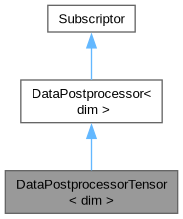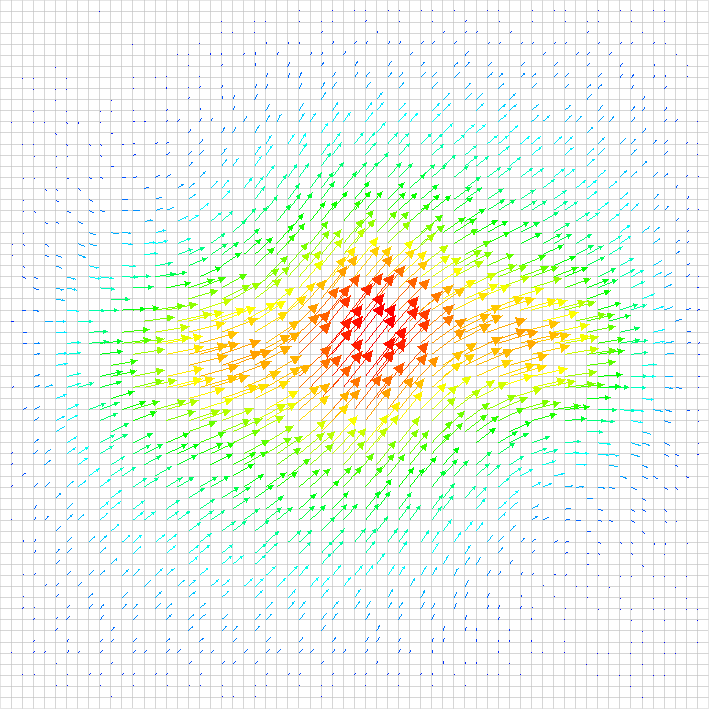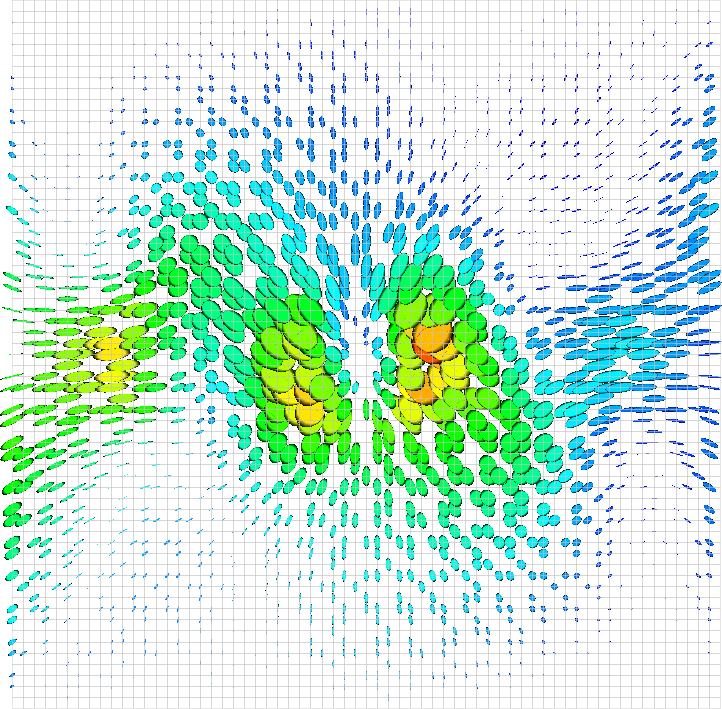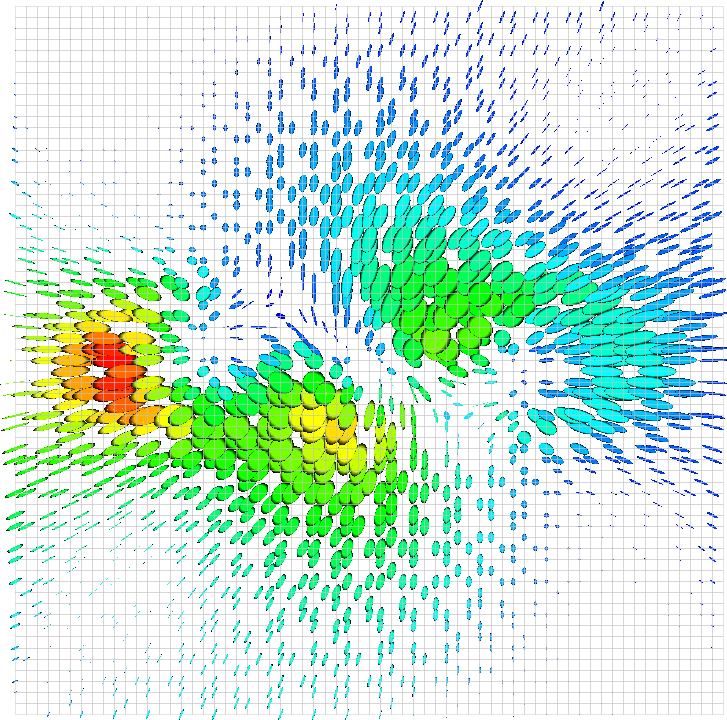 |
Reference documentation for deal.II version 9.6.0
|
 |
Reference documentation for deal.II version 9.6.0
|
#include <deal.II/numerics/data_postprocessor.h>

Public Member Functions | |
| DataPostprocessorTensor (const std::string &name, const UpdateFlags update_flags) | |
| virtual std::vector< std::string > | get_names () const override |
| virtual std::vector< DataComponentInterpretation::DataComponentInterpretation > | get_data_component_interpretation () const override |
| virtual UpdateFlags | get_needed_update_flags () const override |
| virtual void | evaluate_scalar_field (const DataPostprocessorInputs::Scalar< dim > &input_data, std::vector< Vector< double > > &computed_quantities) const |
| virtual void | evaluate_vector_field (const DataPostprocessorInputs::Vector< dim > &input_data, std::vector< Vector< double > > &computed_quantities) const |
| template<class Archive > | |
| void | serialize (Archive &ar, const unsigned int version) |
Subscriptor functionality | |
Classes derived from Subscriptor provide a facility to subscribe to this object. This is mostly used by the SmartPointer class. | |
| void | subscribe (std::atomic< bool > *const validity, const std::string &identifier="") const |
| void | unsubscribe (std::atomic< bool > *const validity, const std::string &identifier="") const |
| unsigned int | n_subscriptions () const |
| template<typename StreamType > | |
| void | list_subscribers (StreamType &stream) const |
| void | list_subscribers () const |
Static Public Member Functions | |
| static ::ExceptionBase & | ExcInUse (int arg1, std::string arg2, std::string arg3) |
| static ::ExceptionBase & | ExcNoSubscriber (std::string arg1, std::string arg2) |
Private Types | |
| using | map_value_type = decltype(counter_map)::value_type |
| using | map_iterator = decltype(counter_map)::iterator |
Private Member Functions | |
| void | check_no_subscribers () const noexcept |
Private Attributes | |
| const std::string | name |
| const UpdateFlags | update_flags |
| std::atomic< unsigned int > | counter |
| std::map< std::string, unsigned int > | counter_map |
| std::vector< std::atomic< bool > * > | validity_pointers |
| const std::type_info * | object_info |
Static Private Attributes | |
| static std::mutex | mutex |
This class provides a simpler interface to the functionality offered by the DataPostprocessor class in case one wants to compute only a single tensor quantity (defined as having exactly dim*dim components) from the finite element field passed to the DataOut class.
For this case, we would like to output all of these components as parts of a tensor-valued quantity. Unfortunately, the various backends that write DataOut data in graphical file formats (see the DataOutBase namespace for what formats can be written) do not support tensor data at the current time. In fact, neither does the DataComponentInterpretation namespace that provides semantic information how individual components of graphical data should be interpreted. Nevertheless, like DataPostprocessorScalar and DataPostprocessorVector, this class helps with setting up what the get_names() and get_needed_update_flags() functions required by the DataPostprocessor base class should return, and so the current class implements these based on information that the constructor of the current class receives from further derived classes.
(In order to visualize this collection of scalar fields that, together, are then supposed to be interpreted as a tensor, one has to (i) use a visualization program that can visualize tensors, and (ii) teach it how to re-combine the scalar fields into tensors. In the case of VisIt – see https://wci.llnl.gov/simulation/computer-codes/visit/ – this is done by creating a new "Expression": in essence, one creates a variable, say "grad_u", that is tensor-valued and whose value is given by the expression {{grad_u_xx,grad_u_xy}, {grad_u_yx, grad_u_yy}}, where the referenced variables are the names of scalar fields that, here, are produced by the example below. VisIt is then able to visualize this "new" variable as a tensor.)
All derived classes have to do is implement a constructor and overload either DataPostprocessor::evaluate_scalar_field() or DataPostprocessor::evaluate_vector_field() as discussed in the DataPostprocessor class's documentation.
An example of how the closely related class DataPostprocessorScalar is used can be found in step-29. An example of how the DataPostprocessorVector class can be used is found in the documentation of that class.
A common example of what one wants to do with postprocessors is to visualize not just the value of the solution, but the gradient. This class is meant for tensor-valued outputs, so we will start with a vector-valued solution: the displacement field of step-8. The gradient is a rank-2 tensor (with exactly dim*dim components), so the current class fits the bill to produce the gradient through postprocessing. Then, the following code snippet implements everything you need to have to visualize the gradient:
The only tricky part in this piece of code is how to sort the dim*dim elements of the strain tensor into the one vector of computed output quantities – in other words, how to unroll the elements of the tensor into the vector. This is facilitated by the Tensor::component_to_unrolled_index() function that takes a pair of indices that specify a particular element of the tensor and returns a vector index that is then used in the code above to fill the computed_quantities array.
The last thing that is necessary is to add another output to the call of DataOut::add_vector() in the output_results() function of the Step8 class of that example program. The corresponding code snippet would then look like this:
This leads to the following output for the displacement field (i.e., the solution) and the gradients (you may want to compare with the solution shown in the results section of step-8; the current data is generated on a uniform mesh for simplicity):


These pictures show an ellipse representing the gradient tensor at, on average, every tenth mesh point. You may want to read through the documentation of the VisIt visualization program (see https://wci.llnl.gov/simulation/computer-codes/visit/) for an interpretation of how exactly tensors are visualizated.
In elasticity, one is often interested not in the gradient of the displacement, but in the "strain", i.e., the symmetrized version of the gradient \varepsilon=\frac 12 (\nabla u + \nabla u^T). This is easily facilitated with the following minor modification:
Using this class in step-8 leads to the following visualization:

Given how easy it is to output the strain, it would also not be very complicated to write a postprocessor that computes the stress in the solution field as the stress is easily computed from the strain by multiplication with either the strain-stress tensor or, in simple cases, the Lamé constants.
data_out.write_vtu() does, but the original VTK file format does not (or at least deal.II's output function does not support writing tensors at the time of writing). If the file format you want to output does not support writing tensor data, you will get an error. Since most visualization programs today support VTU format, and since the VTU writer supports writing tensor data, there should always be a way for you to output tensor data that you can visualize. Definition at line 1243 of file data_postprocessor.h.
|
privateinherited |
The data type used in counter_map.
Definition at line 229 of file subscriptor.h.
|
privateinherited |
The iterator type used in counter_map.
Definition at line 234 of file subscriptor.h.
| DataPostprocessorTensor< dim >::DataPostprocessorTensor | ( | const std::string & | name, |
| const UpdateFlags | update_flags ) |
Constructor. Take the name of the single vector variable computed by classes derived from the current one, as well as the update flags necessary to compute this quantity.
| name | The name by which the vector variable computed by this class should be made available in graphical output files. |
| update_flags | This has to be a combination of update_values, update_gradients, update_hessians and update_quadrature_points. Note that the flag update_quadrature_points updates DataPostprocessorInputs::CommonInputs::evaluation_points. If the DataPostprocessor is to be used in combination with DataOutFaces, you may also ask for a update of normals via the update_normal_vectors flag. The description of the flags can be found at UpdateFlags. |
Definition at line 160 of file data_postprocessor.cc.
|
overridevirtual |
Return the vector of strings describing the names of the computed quantities. Given the purpose of this class, this is a vector with dim entries all equal to the name given to the constructor.
Implements DataPostprocessor< dim >.
Definition at line 171 of file data_postprocessor.cc.
|
overridevirtual |
This function returns information about how the individual components of output files that consist of more than one data set are to be interpreted. Since the current class is meant to be used for a single vector result variable, the returned value is obviously DataComponentInterpretation::component_is_part repeated dim times.
Reimplemented from DataPostprocessor< dim >.
Definition at line 180 of file data_postprocessor.cc.
|
overridevirtual |
Return which data has to be provided to compute the derived quantities. The flags returned here are the ones passed to the constructor of this class.
Implements DataPostprocessor< dim >.
Definition at line 189 of file data_postprocessor.cc.
|
virtualinherited |
This is the main function which actually performs the postprocessing. The second argument is a reference to the postprocessed data which already has correct size and must be filled by this function.
The function takes the values, gradients, and higher derivatives of the solution at all evaluation points, as well as other data such as the cell, via the first argument. Not all of the member vectors of this argument will be filled with data – in fact, derivatives and other quantities will only be contain valid data if the corresponding flags are returned by an overridden version of the get_needed_update_flags() function (implemented in a user's derived class). Otherwise those vectors will be in an unspecified state.
This function is called when the finite element field that is being converted into graphical data by DataOut or similar classes represents scalar data, i.e., if the finite element in use has only a single real-valued vector component.
Reimplemented in DataPostprocessors::BoundaryIds< dim >.
Definition at line 48 of file data_postprocessor.cc.
|
virtualinherited |
Same as the evaluate_scalar_field() function, but this function is called when the original data vector represents vector data, i.e., the finite element in use has multiple vector components. This function is also called if the finite element is scalar but the solution vector is complex-valued. If the solution vector to be visualized is complex-valued (whether scalar or not), then the input data contains first all real parts of the solution vector at each evaluation point, and then all imaginary parts.
Definition at line 59 of file data_postprocessor.cc.
|
inherited |
Subscribes a user of the object by storing the pointer validity. The subscriber may be identified by text supplied as identifier.
Definition at line 135 of file subscriptor.cc.
|
inherited |
Unsubscribes a user from the object.
identifier and the validity pointer must be the same as the one supplied to subscribe(). Definition at line 155 of file subscriptor.cc.
|
inlineinherited |
Return the present number of subscriptions to this object. This allows to use this class for reference counted lifetime determination where the last one to unsubscribe also deletes the object.
Definition at line 300 of file subscriptor.h.
|
inlineinherited |
List the subscribers to the input stream.
Definition at line 317 of file subscriptor.h.
|
inherited |
List the subscribers to deallog.
Definition at line 203 of file subscriptor.cc.
|
inlineinherited |
Read or write the data of this object to or from a stream for the purpose of serialization using the BOOST serialization library.
This function does not actually serialize any of the member variables of this class. The reason is that what this class stores is only who subscribes to this object, but who does so at the time of storing the contents of this object does not necessarily have anything to do with who subscribes to the object when it is restored. Consequently, we do not want to overwrite the subscribers at the time of restoring, and then there is no reason to write the subscribers out in the first place.
Definition at line 309 of file subscriptor.h.
|
privatenoexceptinherited |
Check that there are no objects subscribing to this object. If this check passes then it is safe to destroy the current object. It this check fails then this function will either abort or print an error message to deallog (by using the AssertNothrow mechanism), but will not throw an exception.
Definition at line 52 of file subscriptor.cc.
|
private |
Copies of the two arguments given to the constructor of this class.
Definition at line 1302 of file data_postprocessor.h.
|
private |
Definition at line 1303 of file data_postprocessor.h.
|
mutableprivateinherited |
Store the number of objects which subscribed to this object. Initially, this number is zero, and upon destruction it shall be zero again (i.e. all objects which subscribed should have unsubscribed again).
The creator (and owner) of an object is counted in the map below if HE manages to supply identification.
We use the mutable keyword in order to allow subscription to constant objects also.
This counter may be read from and written to concurrently in multithreaded code: hence we use the std::atomic class template.
Definition at line 218 of file subscriptor.h.
|
mutableprivateinherited |
In this map, we count subscriptions for each different identification string supplied to subscribe().
Definition at line 224 of file subscriptor.h.
|
mutableprivateinherited |
In this vector, we store pointers to the validity bool in the SmartPointer objects that subscribe to this class.
Definition at line 240 of file subscriptor.h.
|
mutableprivateinherited |
Pointer to the typeinfo object of this object, from which we can later deduce the class name. Since this information on the derived class is neither available in the destructor, nor in the constructor, we obtain it in between and store it here.
Definition at line 248 of file subscriptor.h.
|
staticprivateinherited |
A mutex used to ensure data consistency when accessing the mutable members of this class. This lock is used in the subscribe() and unsubscribe() functions, as well as in list_subscribers().
Definition at line 271 of file subscriptor.h.